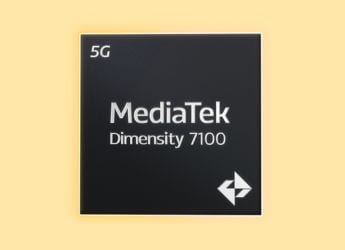- Home
- Mobiles
- Mobiles Features
- Motorola's Journey From DynaTAC to the Moto G4
Motorola's Journey From DynaTAC to the Moto G4

Just a few days ago, Lenovo announced new handsets -- the Moto G4 and Moto G4 Plus. These handsets are important, not just because of the pricing or specs, but the fact that they mark the end of an era. This is the first wave of Moto phones to drop the Motorola branding. This was inevitable after Lenovo completed the acquisition in October 2014.
Considering that the company has been building consumer devices as early as 1930, it is not an entirely pleasant sight to see its name fade away from the phone market. For those not in the know, Motorola's first consumer product was a car radio. It is also the reason why the company is called Motorola -- the motor part of the name actually is a nod to cars. It is also the brand that relayed Neil Armstrong's historic words from the Moon to the Earth in 1969. So as we bid adieu to Motorola's mobiles, here's a look at the steps the company took along the way:
DynaTAC
What you are looking at is the world's first commercially available mobile phone. When developing the DynaTAC (Dynamic Adaptive Total Area Coverage), Motorola's experience in making wireless car phones proved vital. Considered incredibly light at around 800 grams, the handset had a 12 key keypad. It is said that on a 10 hour charge, the mobile offered less than an hour of talk time. Although showcased in 1974, the handset took nine more years to hit the market.
StarTAC
After DynaTAC, Motorola launched a significantly smaller and lighter handset MicroTAC in 1989. With the StarTAC the American brand showed the world how compact a phone can be. Launched in 1996, the StarTAC was the world's first proper clamshell design handset. Other notable features included the addition of a vibrating alert and an LED indicator. With over 60 millions units sold, StarTAC is still one of the best selling Motorola phone of all time.
Timeport
During the turn of the century, Motorola launched its Timeport mobile. It was the first tri-band handset that operated on 900 MHz, 1800 MHz, 1900 MHz frequency. At that time, the phone could be used in the US, Europe, Middle East, Africa, and Asia. Needless to say this 'world' phone was most sought after by the business executives.
A760
Motorola released the Motorola A760 in 2003. It was the world's first mobile phone (or PDA) to run Linux operating system. The A760 had a resistive touch screen with handwriting recognition. Looking at it now, it's hard to realise how futuristic this handset used to seem back in those days. The Motorola A760 had a camera, media player, and a web browser. What more could you ask for?
Motorola RAZR
Motorola introduced its RAZR phone series in 2003. In no time, the first handset dubbed as RAZR V3 became a rage. The 14 mm thin handset was made using aircraft-grade aluminium and had a long lasting nickel-plated keypad. The sleek metal-clad handset was perhaps the most stylish gadget in its time. Little wonder then, that moving over 50 million units, it became the best selling clamshell handset of all time.
Motorola Cliq
In 2009, Motorola jumped on to the Android bandwagon with the Cliq (also knows as DEXT in some markets). It had a 3.1-inch capacitive touchscreen and a slide-out keyboard. The handset shipped with Android 1.5 (Cupcake) with MOTOBLUR UI on top. From this phone onwards, Motorola remained faithful to Google's platform.
Motorola Moto G
While Motorola released quite a few interesting Android devices after the Cliq, nothing could match the success of the original Moto G. With its pleasant user experience and no non-sense approach, this affordable handset won the customers and critics alike. To this date, it remains the best-selling Motorola smartphone.
Chandrakant Isi has been covering all-things-tech for over 10 years. He is a sci-fi aficionado, wannabe space explorer, and Content Lead at MySmartPrice.com.
Catch the latest from the Consumer Electronics Show on Gadgets 360, at our CES 2026 hub.
Related Stories
- Samsung Galaxy Unpacked 2025
- ChatGPT
- Redmi Note 14 Pro+
- iPhone 16
- Apple Vision Pro
- Oneplus 12
- OnePlus Nord CE 3 Lite 5G
- iPhone 13
- Xiaomi 14 Pro
- Oppo Find N3
- Tecno Spark Go (2023)
- Realme V30
- Best Phones Under 25000
- Samsung Galaxy S24 Series
- Cryptocurrency
- iQoo 12
- Samsung Galaxy S24 Ultra
- Giottus
- Samsung Galaxy Z Flip 5
- Apple 'Scary Fast'
- Housefull 5
- GoPro Hero 12 Black Review
- Invincible Season 2
- JioGlass
- HD Ready TV
- Laptop Under 50000
- Smartwatch Under 10000
- Latest Mobile Phones
- Compare Phones
- OPPO Reno 15 Pro Max
- Honor Win RT
- Honor Win
- Xiaomi 17 Ultra Leica Edition
- Xiaomi 17 Ultra
- Huawei Nova 15
- Huawei Nova 15 Pro
- Huawei Nova 15 Ultra
- Asus ProArt P16
- MacBook Pro 14-inch (M5, 2025)
- OPPO Pad Air 5
- Huawei MatePad 11.5 (2026)
- Xiaomi Watch 5
- Huawei Watch 10th Anniversary Edition
- Acerpure Nitro Z Series 100-inch QLED TV
- Samsung 43 Inch LED Ultra HD (4K) Smart TV (UA43UE81AFULXL)
- Asus ROG Ally
- Nintendo Switch Lite
- Haier 1.6 Ton 5 Star Inverter Split AC (HSU19G-MZAID5BN-INV)
- Haier 1.6 Ton 5 Star Inverter Split AC (HSU19G-MZAIM5BN-INV)

















